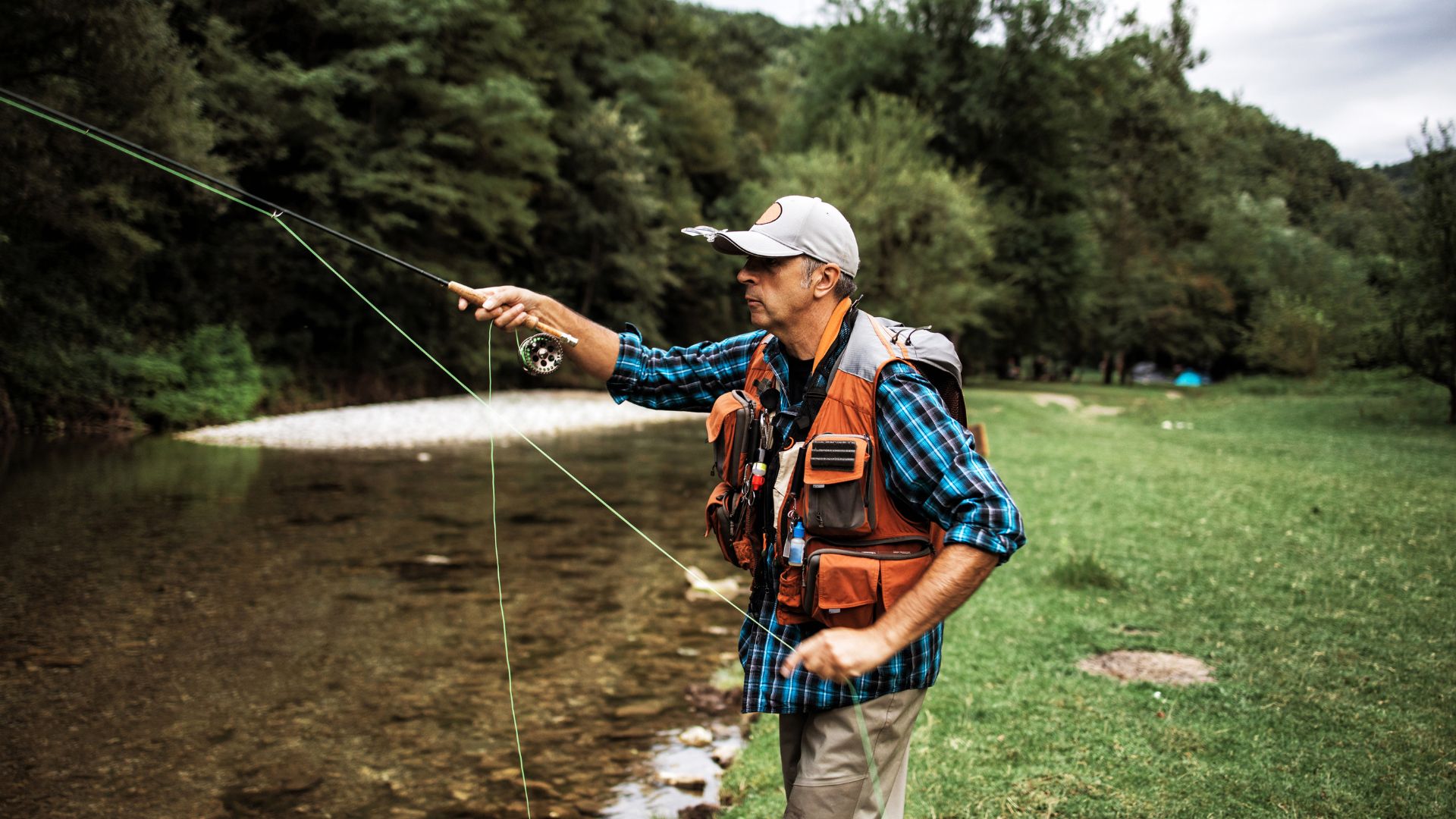Fly Fishing Equipment For Beginners

Fly fishing equipment may seem intimidating for beginners, but an effective kit will allow them to hit the water quickly and efficiently.
Rods are typically listed with both their length and rod weight (wt), which indicates how much line they can accommodate. Heavier rods tend to work best when fishing for larger fish species.
Fly Rods
Fly rods come in various lengths and weights to suit a range of fish species and fishing techniques. Lighter line weights (typically from zero through three) tend to work best for small trout in close quarter situations where you need to throw smaller dries and nymphs.
Higher priced rods tend to be better constructed to handle heavier fly lines and larger fish, and should balance at the apex of its grip to help minimize arm fatigue.
Reels
Reels are at the core of your fly fishing setup, regulating tension on your lines and helping reduce slack as you reel in your catch.
High-end reels are crafted from noncorrosive materials like aluminum or carbon fiber and feature sealed drag systems designed to keep water at bay and provide continuous lubrication. Furthermore, they’re lighter, stronger, and more durable than their less costly counterparts.
Standard reels typically have a small spindle where fly lines connect. Recent design trends emphasize larger arbors to increase how much line can be retrieved with each turn of the handle, helping anglers combat aggressive fish that make long, hard runs.
Line
Fly lines come in various lengths, weights and taper configurations to suit different fishing scenarios and fish species. Floating lines are used for dry flies, nymphs and streamers on rivers, creeks, lakes and saltwater environments.
Weight forward (abbreviated WF) lines feature more of their body and weight in the front section, making casting easier in windy conditions or when using heavy flies. They’re an excellent option when dealing with large, heavy fly patterns.
Intermediate lines typically sink several feet below the surface and are ideal for trout, bass and steelhead flies that require subsurface presentation. Their sink rate also helps minimize any surface-borne winds which might otherwise blow your floating line apart and crease it on its way down.
Leaders & Tippets
Leaders and tippets are small pieces of line that connect your fly line to your flies, and their importance cannot be overstated as they ultimately determine how a fly performs in the water. Leaders and tippets play an essential role in understanding and tying flies; their length plays an influential role in its presentation and behavior in the water.
Leader materials typically consist of nylon or fluorocarbon and come in various diameters for greater versatility. Fluorocarbon offers durability while nylon offers less visibility.
A leader’s butt section should typically be heavier than its class to efficiently transfer energy from your fly line, while also serving as an abrasion barrier against toothy fish. Finally, its midsection should taper down towards its thin tippet for uniform turnover.
Fly Boxes
Fly boxes are essential pieces of equipment for any fly angler. From being placed in your pack or vest to being stored on board a boat, fly boxes help anglers efficiently store and organize flies so that when it comes time to hit the river they’re easy to locate the perfect fly.
We offer a comprehensive selection of fly storage solutions designed to meet any angler’s needs, from large double-sided foam boxes to compact pocket-sized models. From compartment style fly boxes like the Umpqua Feather Merchants Nitrobox to slim slit foam options that fit easily in vest or sling packs – there’s something suitable for every situation here.
Packable Gear Bag
Packable gear bags are specially-designed to house all the essential fly fishing equipment and enable anglers to quickly access it when fishing on the waters, saving time spent managing gear in favor of more time on the water and less managing their equipment.
These bags are typically constructed of durable and waterproof materials to provide optimal protection from rain, spills and other harsh outdoor elements. In addition, many models feature secure closures or locking mechanisms to safeguard gear during travel.
These bags are designed to be carried over one shoulder, featuring comfortable padded straps that can be adjusted to ensure a perfect fit. Many feature multiple pockets and compartments for organized storage purposes; additionally, additional gear attachments such as tool retractors and fly patches may also be attached for customization purposes.
